TABLE OF CONTENTS1. Understanding Differentiated Instruction
2. Strategies for Differentiated Instruction in a TEFL Classroom
3. Implementing Differentiated Instruction
4. Assessment in a Differentiated TEFL Classroom
Understanding Differentiated Instruction
Differentiated instruction is a teaching approach that considers each student's unique learning style, strengths, and weaknesses. In a TEFL classroom, this means tailoring your lessons to meet the diverse needs of English language learners. By providing varied activities, resources, and assessments, you can ensure that all students have the opportunity to succeed, regardless of their language proficiency level.
Strategies for Differentiated Instruction in a TEFL Classroom
There are several effective strategies you can use to implement differentiated instruction in your TEFL classroom. One approach is to group students based on their language abilities, allowing you to target instruction to specific needs. Another strategy is to provide choice in assignments, allowing students to demonstrate their understanding in ways that align with their strengths. Additionally, scaffolding activities can help support students as they work towards language mastery at their own pace.
Implementing Differentiated Instruction
To successfully implement differentiated instruction in your TEFL classroom, it is essential to first assess your students' language proficiency levels. This can be done through formal assessments, informal observations, and student self-assessments. Once you have a clear understanding of your students' needs, you can begin to design lessons that cater to their individual learning styles and abilities. Remember to provide ongoing support and feedback to help students progress towards their language learning goals.
Assessment in a Differentiated TEFL Classroom
Assessment is a critical component of differentiated instruction in a TEFL classroom. By using a variety of assessment methods, such as formative assessments, self-assessments, and project-based assessments, you can gain insight into each student's progress and adjust your instruction accordingly. It is important to provide timely and constructive feedback to students to help them understand their strengths and areas for growth. By incorporating assessment into your differentiated instruction approach, you can create a supportive and inclusive learning environment for all students.
How to Motivate High School Students in the ESL Classroom - ITTT Ways to Improve Discipline in the Classroom - ITTT Tefl reviews - Classroom Management For Teaching English As A Foreign Language Giving Instructions The Impact of Nonverbal and Body Language Communication in the Classroom - ITTT Best Ways to Teach New Vocabulary to Young Students - ITTT The Basics of Planning and Reviewing a Lesson - ITTT Several Ways a Teacher Can Act in The Classroom - ITTT Ways to Improve Cultural Sensitivity in the Classroom - ITTT 9 Ways To Get Efficient In Classroom Management - ITTT 4 Positive Ways to Motivate Students in the Kindergarten Classroom - ITTT

